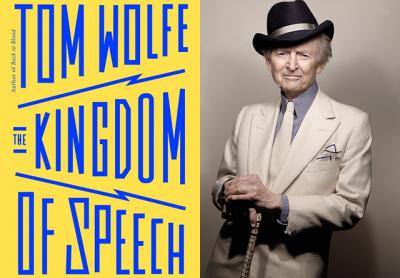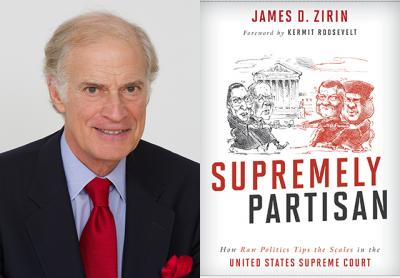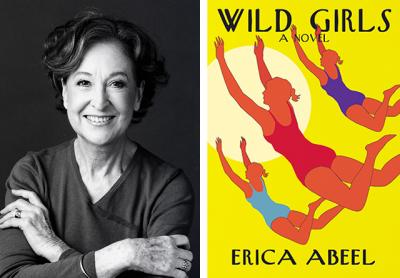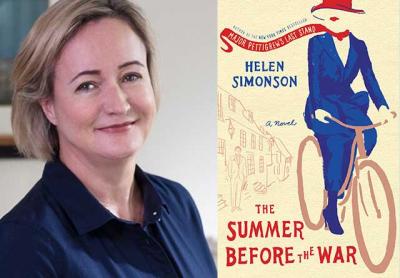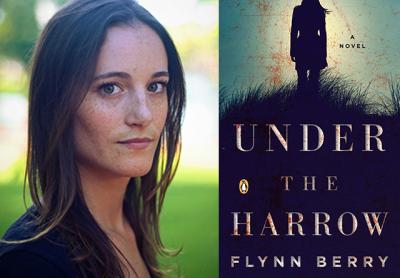The Truth of the Matter
The Truth of the Matter
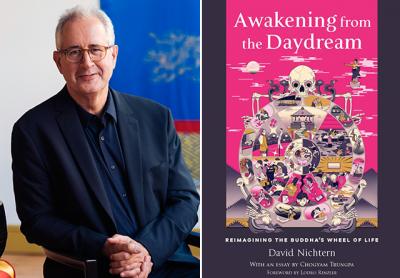
“Awakening From
the Daydream”
David Nichtern
Wisdom Publications, $15.95
David Nichtern, a meditation teacher, has written a remarkably useful and succinct handbook of Buddhist practice and psychological concepts. In “Awakening From the Daydream” he brings an esoteric side of Tibetan Buddhism into comfortable vernacular. As a practicing teacher, Mr. Nichtern has a nuts-and-bolts feel for communicating the subtleties of meditation.
And meditation is indeed a practice, whether a sudden Zen encounter or an incremental change in point of view. The mind is a slippery country that Mr. Nichtern navigates with skill and aplomb. He teaches periodically in East Hampton between tours to Japan and around the U.S., producing online courses, and the musical endeavors that are the other side of his persona.
The Wheel of Life, on which the book is based, is a Tibetan diagram of karma and reincarnation. It reflects a many-layered vision of reality in which a human birth is one of many in a progression. It leads ultimately to a state of freedom not different from the Buddha’s nirvana. Practically speaking, the process is to see through the veil of our desires, impulses, and actions to the truth of the matter. While the wheel traditionally illustrates different heaven, hell, and human realms, it can also be interpreted as Mr. Nichtern does, as different mind states.
Beginning in 1970, Mr. Nichtern studied with the Tibetan teacher Chogyam Trungpa Rinpoche. A Rinpoche is an honored teacher and Trungpa was considered a tulku, or reincarnation of a high lama. He was an early émigré to the U.K. from the Tibetan diaspora following the Communist Chinese invasion of that fabled Himalayan theocracy. Because of his monastic training and status, Trungpa was highly educated. He enrolled in Oxford, later moved to Scotland, and then the U.S., where he founded the Shambhala lineage with a teaching center in Barnet, Vt., and Naropa University in Boulder, Colo., accredited as one of the few Buddhist universities in this country.
A skilled practitioner, spiritual teacher, and writer, Trungpa became widely known for his book “Cutting Through Spiritual Materialism.” He was also a man of excess, intoxication, and promiscuity, which somehow managed not to dilute his spirituality. In 1974, the first season of Naropa, I remember him giving a pellucid lecture on the intricacies of Buddhist doctrine, frequently sipping from a glass he refilled from a pitcher. It appeared to be water but was probably not. Trungpa’s combination of wry humor and deep wisdom was a potent attraction to Westerners eager for an authentic transmission of Buddhism, and enjoying life on the path.
Mr. Nichtern absorbed and permuted Trungpa’s teaching over many years. “Awakening From the Daydream” bridges the rifts of time and heritage between Tibetan Buddhism and contemporary America with clean lines and simple examples. He makes a strong case for Buddhism as a practical toolbox for dealing with the mind.
A primary tenet (or my interpretation thereof) is that reality reflects our mind-set and is a projection of our internal narrative, the thought-story we constantly tell ourselves about who we are and what we think is going on. It turns out who we think we are is not who we are — behind it all we are pure awareness, presence, we are. The mindstuff and the phenomena keep changing; change is the only constant — impermanence! By acknowledging our common situation, our sameness, we build a sense of interconnection with all human experience — compassion! Development of compassion, especially for oneself, is a central building block of this practice.
It’s not easy to see our true situation. As Mr. Nichtern says in “Awakening,” “The mindset of the human realm may be the most transparent and undetectable of all the realms. To become aware of our human realm perspective is like a fish trying to see the water in which it swims.” It takes practice, hence the need for meditation to gain insight into the mind and bring us into the present. He notes, “The awakened state is said to be none other than fully experiencing our life in this very moment.”
About understanding the Wheel of Life, he says, “The Wheel portrays the ways we get trapped in repetitive patterns and imprison ourselves emotionally, intellectually, and in relation to our external life circumstances. In addition to describing the form of our imprisonment, the Wheel also points to a pathway out, to freedom, liberation, true peace, and real happiness.”
The Wheel of Life depicts the Buddhist view that the material reality we inhabit as individuals is underlaid by a subtler one in which our consciousness transmigrates from one incarnation (literally, “in the meat”) to another, dictated by the subtle traces left by our actions, thoughts, and feelings, our karma. The Wheel is a graphic allegory of how awareness interacts with karma, and the opportunity it presents for liberation and long-term fulfillment.
Mr. Nichtern explores this dynamic in ways we can relate to in daily life: “Our minds influence the environment, and the environment influences our minds. Through this loop the realms develop tremendous power.” Later he notes, “Our daydream world, with the familiar stories we weave into it, actually keeps us one step removed from vividly experiencing the moment as it occurs.” And further, “Ultimately the Wheel teachings point toward a state of natural wakefulness that transcends the notion of karma altogether.”
Karma and reincarnation may seem a fantastical reality to us — that’s okay. I recall an account of an interviewer who asked a Zen roshi, an accomplished Buddhist teacher, his opinion about reincarnation. The roshi closed his eyes for a moment and said, “Reincarnation is not an opinion,” and he slammed his fist on the table. “It’s a fact!”
Although Mr. Nichtern writes well of Buddhist loving kindness meditation or metta practice, for me as a student who treads the devotional side of the spiritual path, I would like more about transcendent love as a catalyst for liberation. I find the relation between devotion and detachment fascinating, somewhere between falling in love and letting go, or as E.E. Cummings wrote,
let all go.
so comes love.
“Awakening From the Daydream” is an excellent guidebook to “skillful means,” techniques both for starting out and for pursuing one’s spiritual development. There is deep wisdom here and a functional understanding that we are a point of view immersed in a mystery.
Rameshwar Das co-wrote “Polishing the Mirror” with Ram Dass. He lives in Springs.
David Nichtern, a composer and songwriter, has a house in East Hampton.

